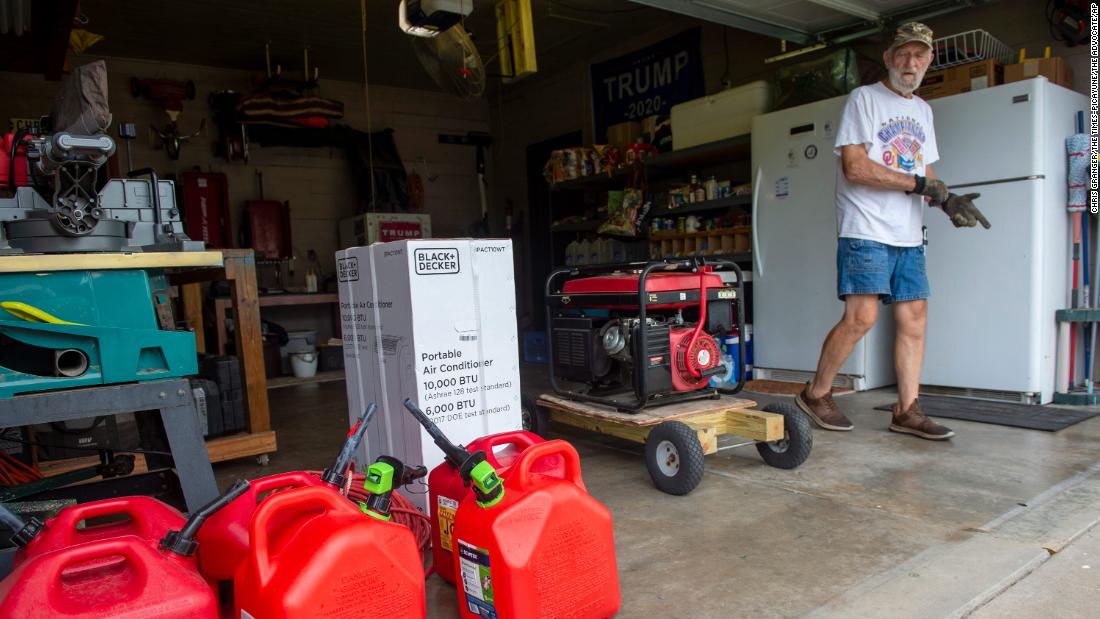Lost power after Ida? Here’s how to safely use a generator
“When a storm hits and the power goes out for an extended period of time, people are going to either buy a portable generator to power their home or pull out the one they already have,” said Nicolette Nye, a spokesperson for the US Consumer Product Safety Commission.
If you’re without power and thinking of using a portable generator, here are seven tips for doing it safely.
1. Install battery-operated carbon monoxide alarms
Since carbon monoxide sinks, having a monitor in your basement is important. But the possibility of exposure on every floor means you should have monitors in the main living areas and in or near bedrooms so you can be awoken by an alarm while sleeping.
2. Disconnect your normal source of power
If you don’t, “the electrical current could reverse, go back through the circuit to the outside power grid, and energize power lines or electrical systems in other buildings to at or near their original voltage without the knowledge of utility or other workers,” the CDC warned.
This backfeed could electrocute utility workers or people in neighboring buildings, said Paul Hope, the home and garden editor at Consumer Reports.
3. Know where and how to position them
A very common scenario that leads to deaths, Hope said, is when rainy weather prompts people to put generators in their garage and maybe prop their garage door open, driving exhaust into the home.
“It’s very often, that sort of desperate circumstance in the immediate aftermath of the storm — people who have not used the generator ever maybe have no idea that it’s as dangerous as it is or thinking the warning is overstated. And it really isn’t,” he said.
4. Keep the generator dry
If the weather is rainy, you can use a canopy-like structure to protect the generator from water.
5. Plug equipment directly into the generator
To plug equipment such as refrigerators or laptop chargers directly into the generator, “use heavy-duty, outdoor-rated extension cords that are in good working condition and have a wire gauge that can handle the electric load of any connected appliances,” the US energy department office advised.
The generator’s owner’s manual should indicate what gauge you need, Hope said. When you’re shopping, know “the lower the (gauge) number, the thicker the cord and the thicker the cord, the more electricity it can carry safely,” he added.
Don’t plug one extension cord into another. If you use a thin, flimsy cord, you could send too much electricity through and start a fire.
And remember: Outdoor-rated and thicker extension cords are made to be protected from the elements, but the generator itself still should stay dry.
6. Take care of your fuel
If you need to store fuel, consider how much you can store and for how long, since gasoline or diesel fuel saved for more than a month may need additional chemicals added to remain usable.
Check with your generator’s supplier or manufacturer’s instructions for guidance, or buy fuel stabilizer from a hardware store or gas station, which will allow you to store it for 18 to 24 more months, Hope said. Store fuel in containers approved by the American National Standards Institute or OSHA, and in a cool, dry, well-ventilated place, away from all potential heat sources.
Before refueling, turn off the generator and let it cool. If the generator is hot when you’re refueling it, any gas that spills on the outside could ignite, Nye said.
Additionally, “if there’s a really big storm, like the recent hurricane, and the gas stations themselves don’t have power, it becomes really crucial to prioritize what it is you want to power,” Hope said. “Things like medical equipment, typically refrigeration, phone chargers, laptops, anything you might need to communicate for safety — those are all really great things to power.”
7. Inspect and maintain your generator regularly
If the generator’s in good shape, keep fresh fuel in the tank and run the generator intermittently so it will be ready when emergencies happen.
![]()


